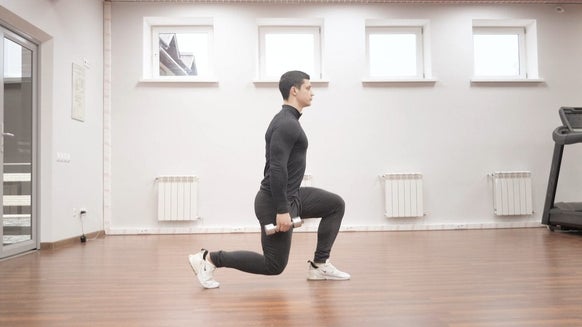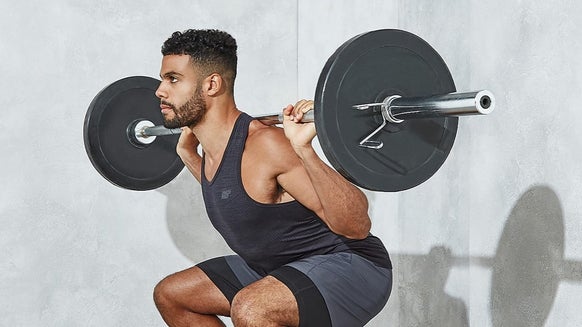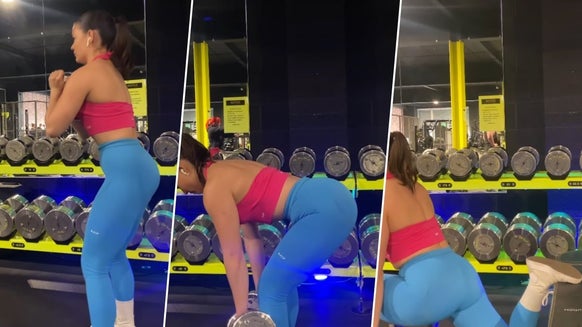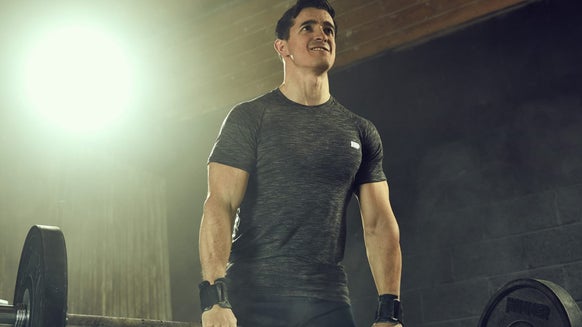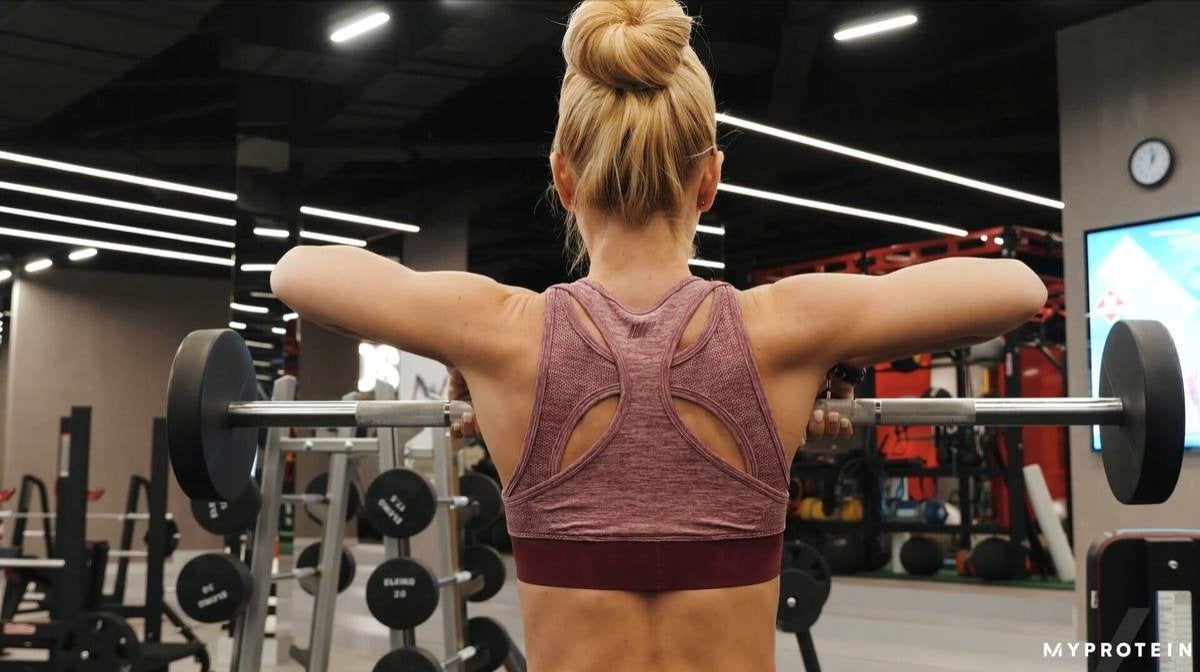
If you're looking to sculpt stronger shoulders and improve your overall physique, you should look at adding upright rows into your training.
Barbell upright rows are great upper body exercise that can fit perfectly into your existing training plans. From shoulder and arm workouts to full-body routines, upright rows should be an essential addition to your training. Here's why...
What is a barbell upright row?
Barbell upright rows are considered to be one of the best muscle-building exercises for the back and shoulders, which can help to tone and shape your upper arms.
You will need to take a barbell, grab it with your hands around shoulder-width apart, and without swinging your hips, lift the barbell to your upper chest, and then lower the weight back down.
Upright rows are a free-weight exercise, usually performed using dumbbells or a barbell. It's a simple exercise but requires the perfect form to achieve the best results and avoid injury. Follow our tips on how to master this exercise.
How to perform the Barbell upright row
https://youtu.be/xg0qajoXEac
1. With the barbell at your feet, grip the bar with slightly narrower than shoulder-width. Brace your core and squeeze your glutes, this will reduce the amount of swinging that occurs and will help stop your lower back aching.
2. Raise your elbows and lift the barbell until your elbows are level with your shoulders. During the movement, it's important to keep the barbell under control. Don't let it swing forward, keep it close to your body,
3. Pause at the top, to ensure you feel your deltoids lifting the weight, before lowering the weight back to the starting position.
4. Repeat for the desired amount of reps.
The benefits of a barbell upright row and the muscles targeted
The upright row is an upper body exercise that targets the lateral deltoids (the muscle that runs along the outside of your shoulder), that's responsible for adding width to your shoulders. This can help your waist appear smaller, whilst toning and shaping your upper arm and shoulders.
This exercise also challenges your trapezius (traps), the muscle in the back that helps you shrug your shoulders, as well as the rhomboids, and even the bicep — making it a great addition to any full-body workouts.
In addition to strengthening and sculpting the shoulders, mastering the barbell upright row can help you with those bigger lifts like squats and deadlifts.
Form Tips
Bracing your core during this movement can help you reduce any strain on your lower back, and will ensure the focus of the exercise is on your delts. Swinging and using your hips defeats the purpose of the exercise, so make sure to control the movement and reap much more from the exercise.
Common mistakes and how to fix them
1. Lifting your elbows too high
Stopping the movement when your elbows reach the same height as your shoulders, ensures you’re not over-exerting your shoulder and potentially causing an injury. This is when the shoulder joint pinches the tendon, known as the supraspinatus, into the socket, that causes sharp pain.
The best way to prevent this happening is by watching your form in the mirror. Stopping your elbows at shoulder height will help reduce any chance of injury significantly. And, if your gym doesn’t have a mirror, a good rule of thumb is when your hands reach your sternum, your elbows should be about shoulder height.
2. Letting your shoulders roll forward or your upper back round
This one can be tricky to spot. When you are lowering the barbell, make sure your chest is proud and your shoulders are not rolling forward. Having the shoulders roll forward places the majority of the stress from the exercise on the traps, which is not our main focus.
Try squeezing your shoulder blades together when you’re performing the upright row, this is called scapular retraction. It puts the shoulders in a strong position to lift and will help focus the exercise on the delts.
Keep your chest proud and shoulders back, to make sure you’re targeting your lateral delts, rather than your traps.
Variations and alternative exercises
Dumbell upright rows
Upright rows can be performed using dumbbells or a barbell. You can use this dumbbell variation if you feel restricted in your wrists or shoulders, as this exercise allows for more freedom in the movement.
https://youtu.be/r93Obscp_xo
1. Hold a dumbbell in each hand with a pronated (palms forward) grip — slightly less than shoulder-width apart. Your arms should be extended with a slight bend at the elbows and your back straight. This is your starting position.
2. Lift up your elbows and raise the dumbbells until your elbows are level with your shoulders. During the movement, keep the dumbbells moving in a straight up-and-down Try not to let it swing forward, keep it close to your body.
3. Pause at the top to ensure you feel the deltoids lifting the weight, then lower the weight back down.
4. When the dumbbells are back at the start position, brace your core and glutes again, and repeat the steps.
Side lateral raise
Lateral raises are one of the best exercises for sculpting shoulders. This is a very simple movement where you raise weights to the sides and up to shoulder level, then lower them again. Sounds simple, but it's certainly not easy...
https://youtu.be/WNGmYlRVkwA
1. Take a light dumbbell, 4-10kg in each hand, and have them by your
2. With a slight bend in your elbow, lift your arms out to your
3. Raise the dumbbells upwards until they are level with your shoulders, pause, and return back to the start
Seated lateral raise
This is the same movement as the lateral raise, but this time you'll be sat down on a bench.
https://youtu.be/n90_Kf2R1SI
1. Sit on a bench, holding a dumbbell in each hand by your sides.
2. Raise the dumbbells to your side until they're level with your shoulders.
3. Lower the dumbbells back to the starting position. Keeping them under control throughout the whole movement.
4. Repeat for the desired amount of reps.
Smith Machine Shoulder Press
The smith machine shoulder press is a great way to target all the muscles in your shoulder. Using the smith machine helps to keep your muscles under tension throughout the whole movement, and is generally safer and less strenuous on the joints — compared to free weight training.
https://youtu.be/Mg_HSeDU-iU
1. Place a flat bench under a smith machine. The barbell should be positioned at a height where your arms are almost fully extended to reach it.
2. Grab the barbell with your palms facing forwards. Unlock the bar and press your arms up until they're fully extended. This will be your starting position.
3. Slowly lower the barbell below the chin and just above chest height.
4. Lift the barbell back to the starting position.
Take home message
The upright row is an almost total upper body movement, targeting your shoulders, traps, forearms and biceps. You can alter the movement by switching to dumbbells or by isolating your lateral delts further by utilizing lateral raises.
Try placing this exercise early on in your workout as it involves a lot of muscles, and you will want to smash this one whilst you’re fresh.
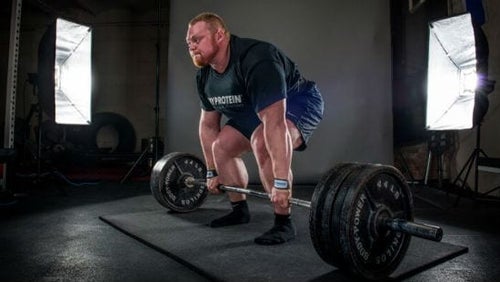
4 Barbell Deadlift Variations

Alice Pearson is a UKVRN Registered Associate Nutritionist and UK Anti‐Doping accredited advisor, having obtained a Bachelor’s of Science in Nutrition and a Master’s of Science in Sport Nutrition. She has a specialist interest in the use of sports supplements for improving health, fitness, and sport performance. Alice has experience working with both amateur and elite athletes, including providing nutritional support to Tranmere Rovers FC and Newcastle Falcons Rugby Club. Her nutritional guidance is always supported by evidence‐based research, which she keeps up to date through continuing professional development and independent learning. In her spare time, Alice loves travelling, hitting the gym, and getting stuck into a good book. Find out more about Alice's story here.




